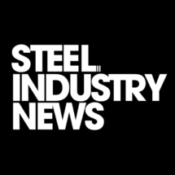The steel industry is experiencing a notable price correction, with major players Nucor and Cleveland-Cliffs leading the charge. Recent announcements from both companies indicate a leveling for hot-rolled coil (HRC) prices. This article delves into the specific price adjustments made by these industry giants, analyzes the potential reasons behind these moves, and assesses the broader implications for the steel market.
Nucor and Cleveland-Cliffs: Setting the Pace
- Nucor’s CSP: Nucor, known for its innovative Consumer Spot Price (CSP) for HRC, has continued its downward trend. The latest announcement places the base price at $675/ton, marking a $25/ton increase from the previous week. This follows a series of price reductions since the peak in June.
- Cleveland-Cliffs’ HR Pricing: Cleveland-Cliffs has also joined the downward trend, announcing a $50/ton decrease for its August HR price, settling at $670/ton. The company has also indicated a potential for further adjustments before the September book closes.
Nucor CSP Price History
| Date | CSP HRC Base Price (Most Mills) | Change from Previous Weeks |
|---|---|---|
| July 29th, 2024 | $675/ton | Up $25/ton |
| July 15th, 2024 | $650/ton | Down $20/ton |
| July 1st, 2024 | $670/ton | Down $10/ton |
| June 24th, 2024 | $680/ton | Down $35/ton |
| June 17th, 2024 | $715/ton | Down $65/ton |
| June 3rd, 2024 | $780/ton | Up $10/ton |
Factors Driving Steel Price Decline
Several factors are contributing to the downward pressure on steel prices:
- Weakening Demand: The global economy is facing uncertainties, impacting manufacturing and construction sectors, key consumers of steel. Reduced demand has led to a surplus of steel in the market.
- Rising Interest Rates: Higher interest rates have cooled the housing market, a major driver of steel consumption. As construction activity slows, demand for steel naturally decreases.
- Inventory Buildup: Steel producers and distributors might be holding excess inventory due to lower demand, prompting them to lower prices to clear stock.
- Global Economic Outlook: Concerns over a potential recession or economic slowdown have created a cautious sentiment among steel buyers, leading to reduced purchasing activity.
Implications for the Steel Industry
The decline in steel prices has significant implications for the industry:
- Profit Margins Squeeze: Steel producers are facing narrower profit margins due to lower selling prices. This could lead to cost-cutting measures, production adjustments, or even potential closures in some cases.
- Increased Competition: The competitive landscape within the steel industry is likely to intensify as companies vie for market share in a challenging environment.
- Impact on Steel Consumers: While lower steel prices offer some relief to steel-consuming industries like construction and manufacturing, the overall economic outlook remains uncertain, which could limit the benefits of reduced input costs.
A New Era of Price Leadership?
Historically, the steel industry has seen a relatively stable pricing structure, with major producers often following each other’s lead. However, the recent actions by Nucor and Cleveland-Cliffs suggest a potential shift in this dynamic. By independently setting prices, these companies are demonstrating a willingness to deviate from traditional pricing norms.
It remains to be seen if other steel producers will follow suit or maintain their traditional approach. The industry is at a crossroads, and the coming months will be crucial in determining the future of steel pricing and the competitive landscape.
Looking Ahead: Uncertainties and Opportunities
The steel industry is navigating a complex and challenging environment. While the current downward trend in prices presents opportunities for steel consumers, it also poses risks for producers. The interplay between global economic conditions, housing market performance, and the strategies of major steelmakers will continue to shape the industry’s trajectory.
As the market evolves, steel producers will need to adapt their business models to remain competitive. This might involve diversifying product offerings, focusing on value-added products, or exploring new markets. Additionally, collaboration and innovation will be key to navigating the challenges and seizing opportunities in this dynamic landscape.
The coming months will be critical for the steel industry. Market participants will closely watch price movements, economic indicators, and the actions of major steel producers to gauge the direction of the market. It’s possible that this confluence of pricing from these two producers may establish a consensus floor to the current market. The lower input costs for Iron Ore, Zinc and Coking Coal will help support operating at these price levels.
For the latest steel news updates on Steel Pricing and other steel trends, be sure to follow Steel Industry News
Check out some of our other articles on the Steel Market:
Nucor CSP Price Update: Downward Trend Continues
Summer Slowdown: Exploring the Factors Behind the Steel Market Downturn
Steel Prices Slide: Nucor CSP Dips Again, Construction Slowdown a Potential Culprit
Steel Price Update: Nucor CSP Dips, Cleveland Cliffs Follows With August Price Decrease
Steel Prices Continue Decline Pressured By Housing Market Slowdown
Nucor’s CSP: A Game Changer in Steel Price Transparency?
Steel Price Update: Analyzing the Recent Nucor Price Decrease
Nucor and Cleveland-Cliffs Announce Pricing Changes
U.S. Steel Market: Nucor Weekly CSP Shakes Up Hot Roll Coil Pricing
Nucor Announces Price Decrease of $65/ton
Nucor Price Change: A Decrease In Price
Nucor Posts First Consumer Spot Price for Hot-Rolled Coil
Nucor Announces Consumer Spot Price (CSP) for Hot Roll









